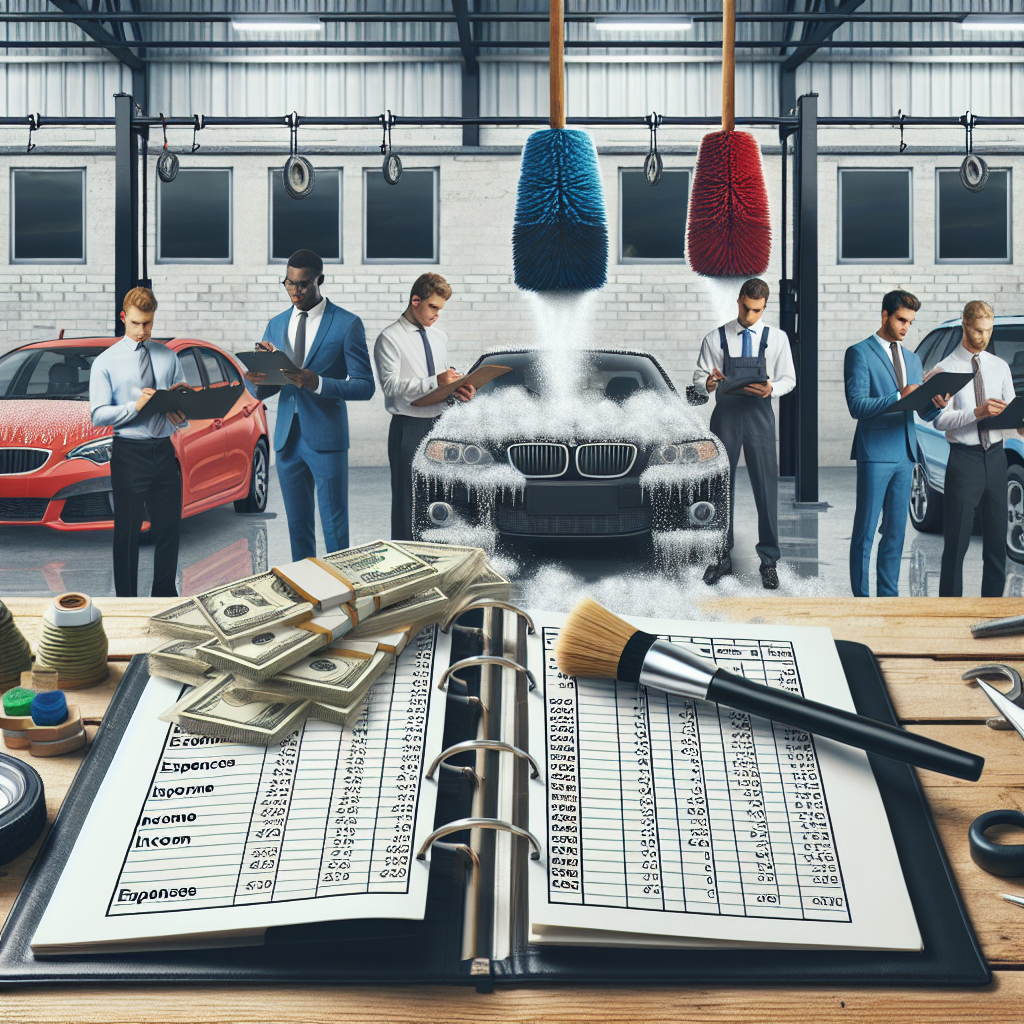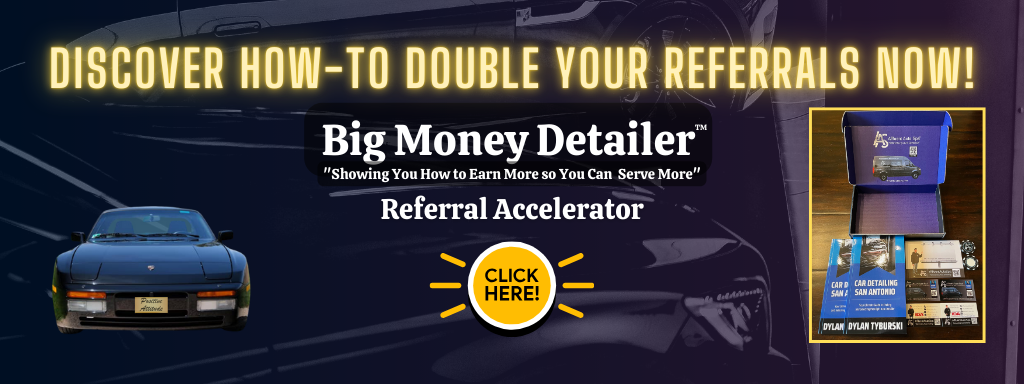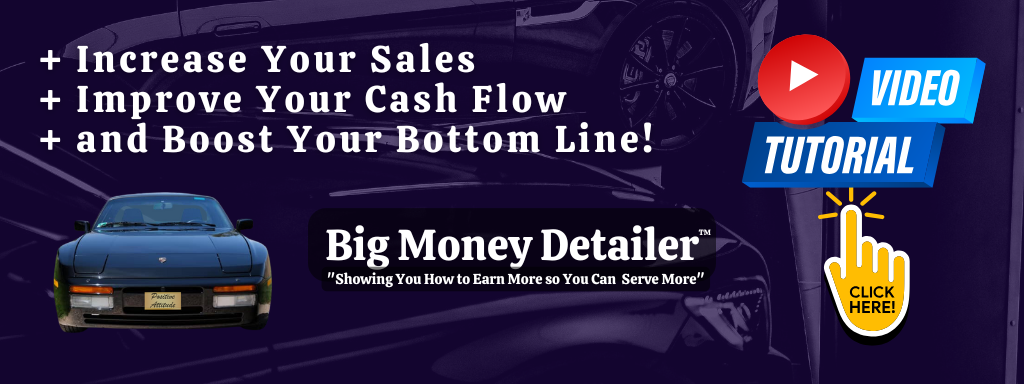Understanding Cash Flow Basics
What is Cash Flow?
Cash flow is the lifeblood of any business, including our beloved auto detailing operations. It’s all about the money coming in and going out. Understanding this concept is crucial because it helps us see whether we are gaining or losing money each month. Imagine prepping someone’s car; just like you wouldn’t apply wax to a dirty surface, you can’t manage finances without a clear view of cash flow.
In practice, cash flow is influenced by the services we sell, our customer payment habits, and our overhead costs. Keeping track of your cash flow can help highlight where you’re doing well and where you might trip up. It’s not just about having enough cash at the end of the month; it’s about ensuring that cash can cover your expenses at all times!
So, whether you’re detailing a sleek sedan or a rugged SUV, remember: knowing your cash flow can keep your business polished and smooth!
Setting Up Your Budget
Creating Revenue Projections
First things first, let’s talk revenue projections. This is where you forecast how much money you expect to bring in from your detailing services. I find it super helpful to look at past sales data to ensure I’m making realistic assumptions. If you customarily detail 30 cars a month, you can project a semblance of that moving forward.
Another crucial piece of this puzzle is knowing what services are the most profitable. High-margin services, like full detailing versus basic washes, should be front and center in your projections. If you haven’t tracked this before, now’s a great time to start. Every dollar counts, especially in the beginning!
Finally, consider seasonal fluctuations. For instance, summer might surge with demand while winter could be slower. Always account for these ebbs and flows to tweak your budget as the seasons change. This way, you can enjoy sunny profits even in dreary months.
Tracking Your Expenses
Identifying Fixed vs. Variable Costs
Categorizing expenses is something I wish I’d grasped earlier on in my business journey. Recognizing fixed and variable costs helps maintain a balanced budget. Fixed costs, like rent and insurance, stay the same monthly, while variable costs fluctuate based on activity – think cleaning supplies or overtime pay for staff during busy seasons.
This awareness allows me to know where I can cut back when profits dip. If I notice my variable costs skyrocketing with new products or services, it prompts an assessment of whether those expenses are worth the investment or if I should reign them in.
Keeping an eye on these costs can provide a safety net during lean periods, ensuring I’m not caught off guard when the cash flow isn’t flush. Knowledge is power, right?
Creating Cash Flow Statements
Understanding the Components
Cash flow statements might sound stiff, but trust me, they’re intuitive once you break them down! Think of it like a detailed report card for your business’s cash flow. It includes operating cash flow, which is money generated from day-to-day activities, investing cash flow, and financing cash flow.
Getting familiar with these components helps identify where money is well-spent or wasted. For instance, low operating cash flow could indicate that it’s time to reassess pricing strategy or promotional efforts.
Plus, cash flow statements offer transparency—adding credibility when applying for loans or seeking partnerships. You want to project confidence in your numbers, and these statements help paint a clear picture.
Regularly Reviewing Your Budget
Importance of Monthly Reviews
After setting everything up, don’t just let it gather dust! Regularly reviewing your budget is like giving your detailing tools a good polish. I find that sitting down at the end of every month to go through my numbers keeps me on track. It’s essential to see how well you’re sticking to your budget and highlight any discrepancies.
If a particular month doesn’t go to plan (which happens), I can tweak my strategy moving forward. This will allow you to respond, rather than react, to financial surprises. You’re more equipped to make quick, informed financial decisions this way.
Moreover, this habit builds a comfortable cycle where you get accustomed to checking in on your financial health, ensuring that you’re always ready for whatever the detailing world throws at you!
Conclusion
Implementing a cash flow budget in your auto detailing business might seem like a daunting task, but trust me, breaking it down into these steps makes it manageable. From understanding the fundamental principles of cash flow to actively reviewing and adjusting your budget, you’ll find yourself steering your business with confidence. Remember, a solid budget is like a good detail job—meticulous, reflective of your work ethic, and ultimately pays off in the long run!
FAQ
1. Why is it important to implement a cash flow budget for my detailing business?
A cash flow budget helps ensure that you have enough incoming cash to cover your expenses. It’s crucial for maintaining smooth operations and making informed decisions to grow your business.
2. How can I accurately project my revenue?
Look back at your sales history, particularly focusing on your best-selling services, and consider seasonal trends that may impact your sales. Be realistic with your goals!
3. What should I do if my expenses keep rising?
You’ll want to conduct a thorough review of your fixed and variable costs. Identify areas where you can cut back without sacrificing quality or customer service.
4. How often should I review my cash flow budget?
It’s best to review your cash flow budget monthly. This regular assessment helps you stay proactive rather than reactive, allowing for timely adjustments to maximize profitability.
5. Can I use software to help with budgeting?
Absolutely! There are many accounting and budgeting tools available that can simplify tracking and forecasting your cash flow, allowing you to focus more on your detailing work.



